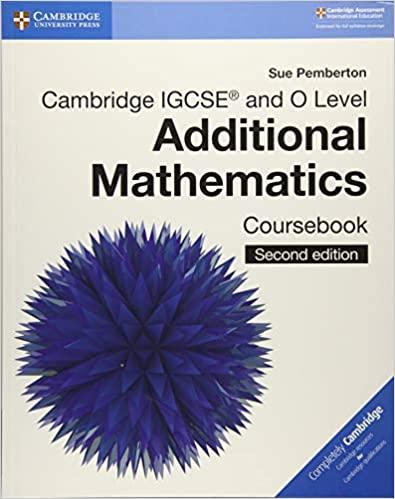Question
Each year, Fortune Magazine presents rankings of America's leading businesswomen, including lists of the most powerful, highest paid, youngest, and movers. In this case study,
Each year, Fortune Magazine presents rankings of America's leading businesswomen, including lists of
the most powerful, highest paid, youngest, and "movers." In this case study, we discuss Fortune's list of
the highest paid women.
Total compensation includes annualized base salary, discretionary and performance-based bonus payouts,
the grant-date fair value of new stock and option awards, and other compensation. If relevant, other
compensation includes severance payments.
Equilar Inc., an executive compensation research firm in Redwood Shores, California, prepared a chart,
which we found on CNNMoney.com, by looking at companies with more than $1 billion in revenues that
filed proxies by August 15. From that chart, we constructed the following table showing the 25 highest
paid women, based on 2007 total compensation.
Apply your learned statistical skills to answer the following questions. You are allowed to use any
a. For each of the four columns of the table, classify the data as either qualitative or quantitative; if
quantitative, further classify it as discrete or continuous. Also identify the variable under consideration in
each case.
b. Use cut-point grouping to organize the compensation data into frequency and relative-frequency
distributions. Use a class width of 5 and a first cut-point of 5.
c. Construct frequency and relative-frequency histograms of the compensation data based on your
grouping in part (b).
d. Identify and interpret the shape of your histograms in part (c).
e. Truncate each compensation to a whole number (i.e., find the greatest integer in each compensation),
and then obtain a stem-and-leaf diagram of the resulting data, using two lines per stem.
f. Round each compensation to a whole number, and then obtain a stem-and-leaf diagram of the resulting
data, using two lines per stem.
g. Which of the stem-and-leaf diagrams in parts (e) and (f ) corresponds to the frequency histogram in
part (c)? Can you explain why?
h. Round each compensation to a whole number, and then obtain a dotplot of the resulting data.
Step by Step Solution
There are 3 Steps involved in it
Step: 1

Get Instant Access to Expert-Tailored Solutions
See step-by-step solutions with expert insights and AI powered tools for academic success
Step: 2

Step: 3

Ace Your Homework with AI
Get the answers you need in no time with our AI-driven, step-by-step assistance
Get Started


